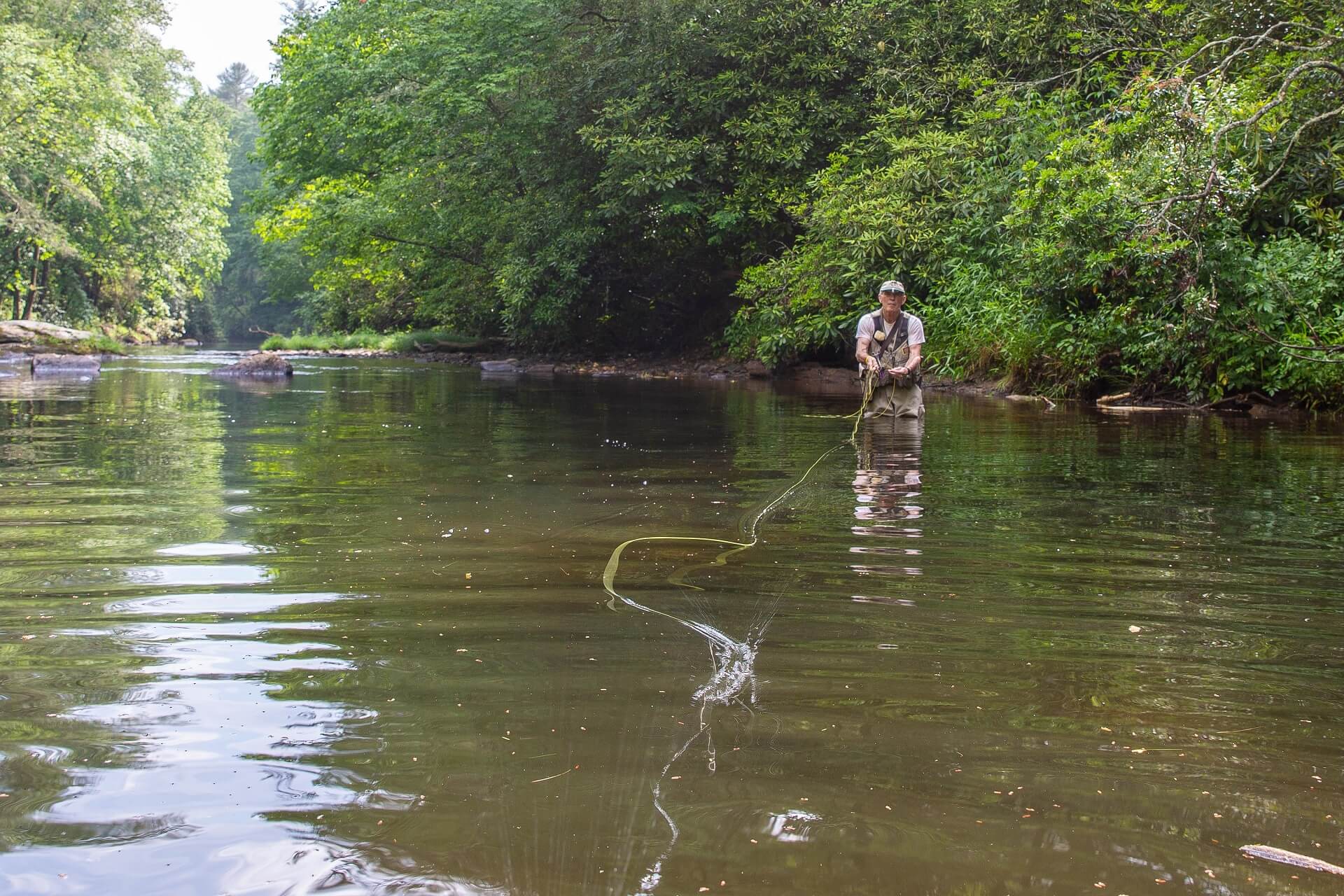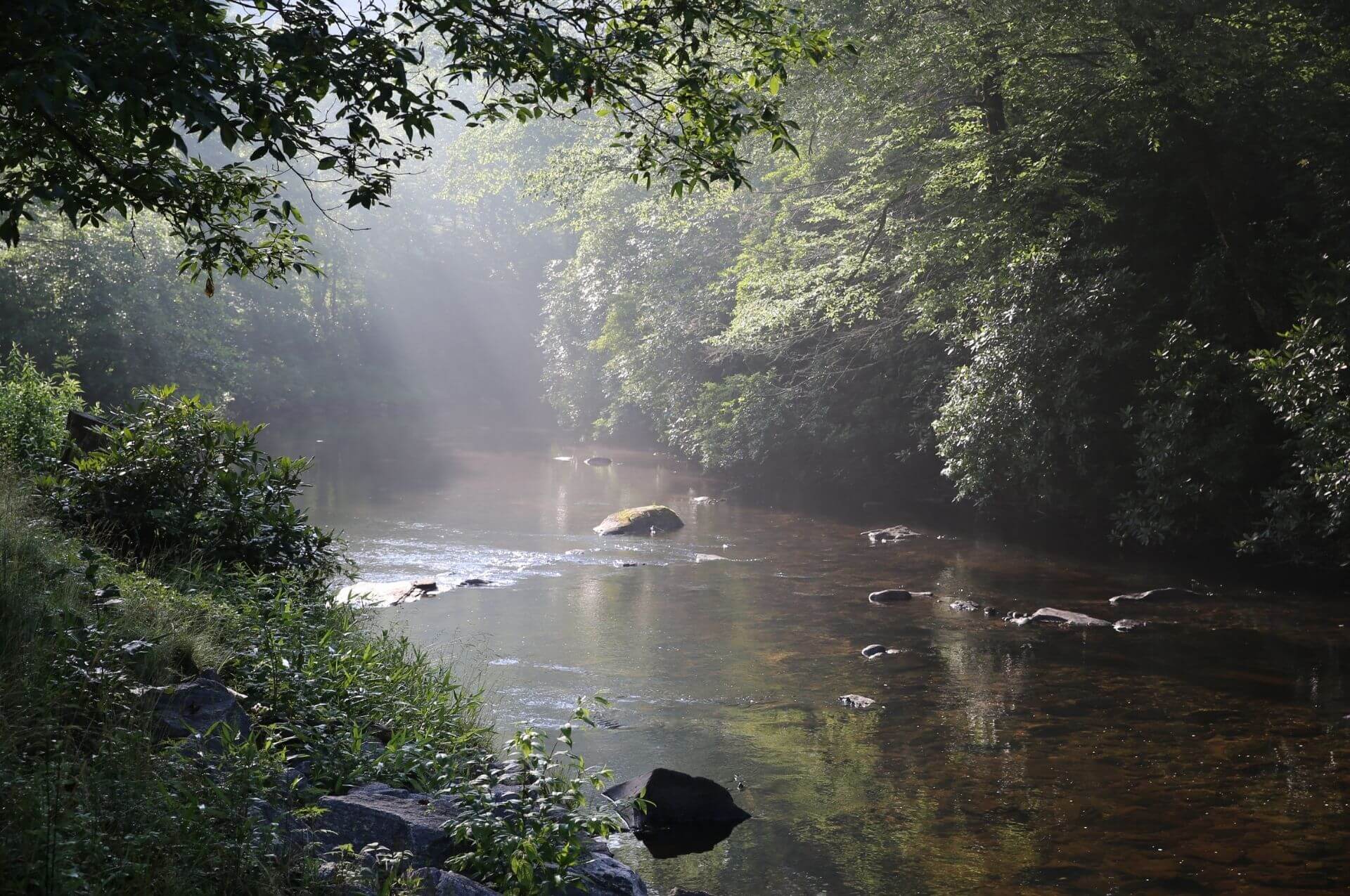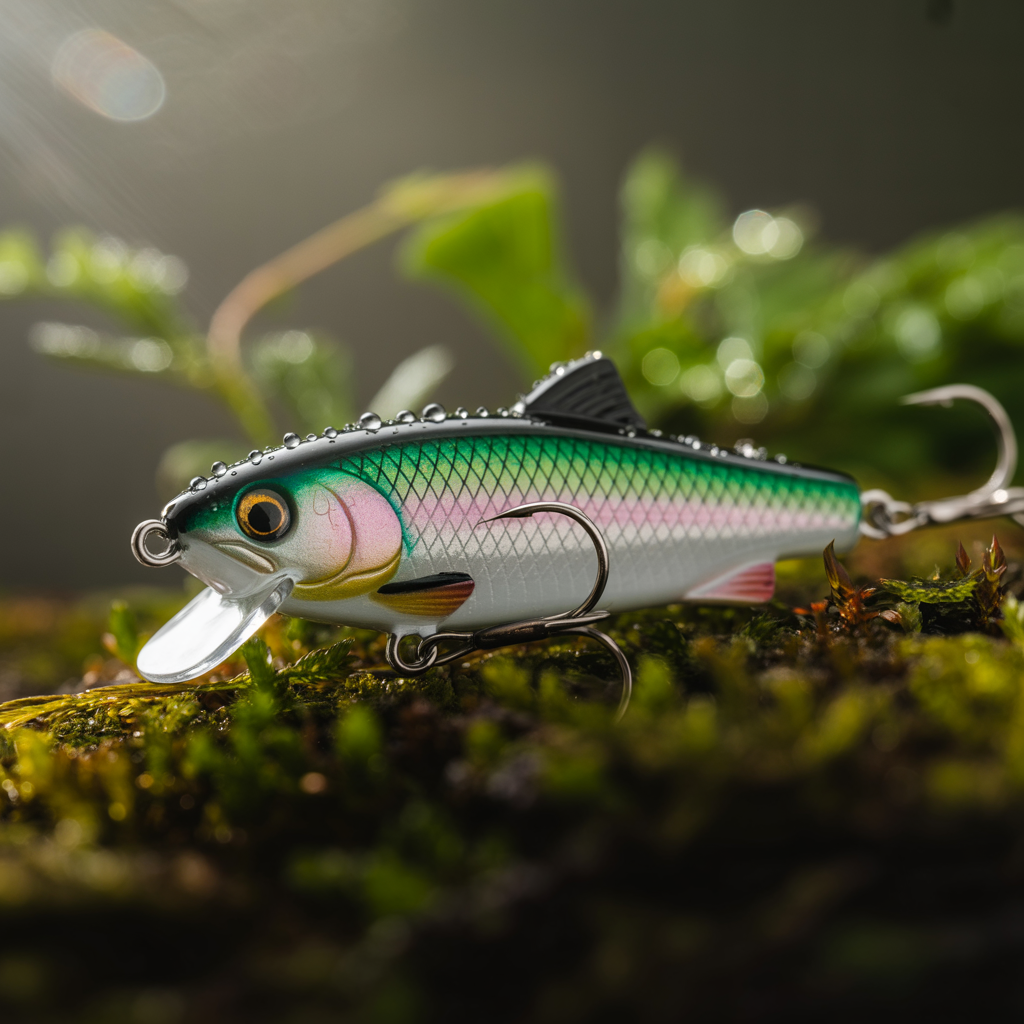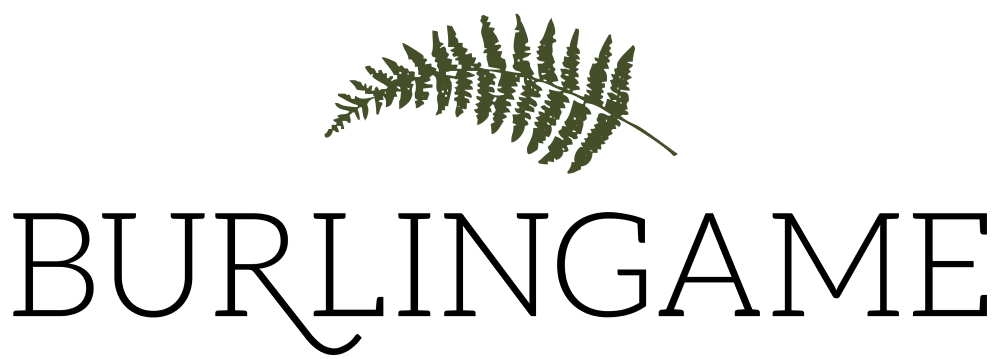
The Dance of Water and Light
They glide through crystalline waters, shadows beneath the surface that reveal themselves with a flash of silver or the subtle ring of a rise. The trout of Burlingame’s mountain streams offer more than mere sport—they provide a pathway to discovery, presence, and the quiet joy that comes from immersing oneself in nature’s perfect rhythms.
From the flicker of a rainbow breaking the water’s surface during a morning of fly fishing to evenings spent watching the golden light of sunset dance across riffles and pools, Burlingame offers anglers of all experience levels an opportunity to engage with one of Western North Carolina’s most cherished traditions. The Horsepasture River, flowing through our community, stands as a living treasure—a vibrant ecosystem that supports thriving populations of rainbow, brown, and native brook trout.
For newcomers to the art of fly fishing, the prospect of learning this centuries-old pursuit might seem daunting. Yet the journey from novice to accomplished angler unfolds naturally when guided by proper instruction, quality equipment, and the support of a community that celebrates both the catch and the experience surrounding it. As anglers hone their skills on the water, they may find that the patience and precision acquired through fly fishing translate seamlessly into other pursuits, such as mastering mountain golf techniques. The calmness and focus developed while casting a line can enhance one’s performance on the golf course, where every swing demands attention to detail. Embracing the tranquility of nature while pursuing these passions cultivates a deeper appreciation for the great outdoors and the opportunities for growth it provides.

Essential Gear: The Foundation of Fly Fishing
The art of fly fishing begins with equipment that balances functionality with the joy of using well-crafted tools. Beginning anglers benefit from focusing on essential elements that provide both versatility and room for growth.
The Rod: Your Primary Connection
For Burlingame’s mountain streams, where close quarters casting and medium-sized fish predominate, a 9-foot 5-weight rod provides the ideal starting point for most beginners. This configuration offers enough backbone to handle larger rainbow and brown trout while remaining light enough for comfortable all-day casting and the presentation of smaller flies.
Many members find that starting with a medium-action rod provides the most forgiving platform for developing casting skills, with enough sensitivity to feel the subtle takes that characterize trout feeding in our clear mountain waters.
For those uncertain about initial equipment investments, Burlingame’s fishing program offers quality loaner setups that allow newcomers to experience the sport before purchasing their own gear.
The Reel and Line System
While fly reels have evolved into precision instruments with advanced drag systems, beginners fishing Burlingame’s waters need not invest in complex equipment. A simple click-and-pawl reel that balances properly with your chosen rod provides all the functionality needed for mountain stream fishing, where most trout are played with hand pressure on the line.
For Burlingame’s streams, a weight-forward floating line matched to your rod weight provides the versatility to present everything from small dry flies to larger nymphs and streamers. Leaders typically range from 7.5 to 9 feet, with a 9-foot 5X leader creating a versatile starting point that handles most common fly sizes.
In the clear waters of the Horsepasture River, carrying tippet spools in sizes 4X through 6X provides the versatility to adapt to changing conditions and fish wariness.
Flies: Artistic Imitations of Life
Perhaps no aspect of fly fishing captures the imagination quite like the flies themselves—those artistic creations of feather, fur, and thread that imitate the insects and other food sources trout seek. For beginners approaching Burlingame’s waters, focusing on a limited selection of proven patterns simplifies decision-making.
Beginning with a selection that includes Adams and Blue-Winged Olive dry flies (#14-18), Pheasant Tail and Hare’s Ear nymphs (#14-18), and simple Woolly Bugger streamers (#8-10) in black and olive provides coverage for most fishing situations.
The Burlingame Fishing Program offers seasonal fly recommendations that match current hatches and feeding patterns, allowing members to supplement their basic selections with timely choices.
Fundamental Techniques: The Art of Presentation
While equipment provides the necessary tools, technique transforms those tools into effective fishing. Developing fundamental skills creates confidence on the water and establishes the foundation for more advanced approaches.
The Basic Cast and Reading Water
The fly cast represents the aspect of fly fishing most visibly different from other angling methods. While many beginners focus on distance, the waters of Burlingame reward accuracy and delicacy over long casts. Learning to deliver flies precisely to feeding lanes within 20-30 feet proves far more valuable than struggling to reach distant water.
Visualizing the casting motion as drawing the letter “D” in the air—with the straight line forming the back cast and the curved portion representing the forward cast and gentle landing—helps develop the fluid motion that characterizes effective casting.
Beyond casting mechanics, developing the ability to “read” water—identifying where trout likely hold in various conditions—distinguishes successful anglers from those who fish without purpose. Trout seek positions that balance three primary needs: access to food, protection from predators, and efficient energy expenditure. Learning to identify convergence points—the seams between fast and slow water, the downstream edges of rocks, the depth transitions at pool heads—transforms random casting into targeted presentation.
Presentation Approaches
On Burlingame’s waters, understanding three fundamental approaches provides the versatility to adapt to changing situations throughout the day:
The dry fly approach presents floating imitations of adult insects, offering perhaps the most visually satisfying method as you watch trout rise to your offering. This technique works particularly well during morning and evening hours when hatching insects bring trout to the surface.
Nymph fishing—presenting subsurface imitations of immature aquatic insects—accesses the feeding zone where trout take approximately 80% of their food. This approach proves particularly effective during bright midday hours when trout may be reluctant to surface.
Streamer fishing uses larger flies that imitate small fish or other substantial food sources, adopting a more active presentation style that triggers predatory responses. This approach proves especially effective for targeting larger brown trout or during higher water conditions.
Seasonal Opportunities: The Changing Rhythms of Mountain Streams
The waters flowing through Burlingame follow seasonal rhythms that influence both fish behavior and effective fishing approaches.
Spring: The Season of Renewal
As winter’s grip loosens in late March and April, our mountain streams experience the year’s first significant insect hatches. This period often produces some of the year’s most consistent fishing, with water temperatures warming into ideal ranges that stimulate both insect and fish activity.
Spring typically brings higher water levels, creating ideal conditions for nymphing techniques, particularly along the edges where trout find relief from strongest currents. For members new to fly fishing, spring offers an excellent introduction period, with hungry trout often forgiving less-than-perfect presentations.
Summer: The Season of Abundance
By June, the Horsepasture River typically settles into its summer flow pattern, with clear water and established feeding lanes creating ideal conditions for observational fishing. Early mornings and evenings during summer months often produce spectacular dry fly fishing, while midday hours offer excellent opportunities for nymph fishing in deeper runs and pools.
Perhaps the most distinctive summer opportunity involves terrestrial fishing—presenting imitations of non-aquatic insects like ants, beetles, and grasshoppers. This fishing proves particularly beginner-friendly, as presentations need not match the precision required for traditional dry fly approaches.
Fall and Winter
Fall brings some of our most visually spectacular fishing days, with colorful foliage reflecting on the water’s surface and trout displaying intensified spawning colors. Water temperatures returning to optimal ranges coincide with trout’s biological imperative to feed heavily before winter, creating conditions where larger fish often become more aggressive.
While many anglers store their equipment during winter months, Burlingame’s location offers milder conditions than many mountain regions, creating year-round fishing possibilities for dedicated members. Winter fishing success relies on focusing on the warmest hours of day, selecting deeper, slower pools, and presenting smaller nymphs near the bottom. Additionally, anglers can explore the sapphire valley fishing spots, which are especially productive during the colder months. The combination of strategic timing and location often yields impressive results, even when temperatures dip. With the right approach, winter fishing can become a rewarding experience for those willing to brave the elements.
Conservation Ethic and Learning Pathways
The privilege of fishing Burlingame’s pristine waters carries responsibility for their protection. Our community maintains a strong conservation ethic through careful catch and release practices, habitat protection efforts, and property management guidelines that minimize runoff and protect water quality.
Burlingame provides structured pathways for members to develop fly fishing skills through guided experiences, workshops and clinics, and support for independent exploration. Our fishing programs offer private and small-group sessions with experienced instructors who combine technical instruction with intimate knowledge of Burlingame’s waters. Participants not only enhance their casting and bait techniques but also connect with the serene beauty of the outdoors. As part of enhancing the overall experience, our programs align with the ‘sapphire mountain living overview,’ ensuring a holistic approach to fly fishing that celebrates both skill-building and environmental appreciation. Whether you are a beginner or looking to refine your skills, Burlingame’s offerings create memorable moments on the water.
The community of anglers within Burlingame creates an informal knowledge network where experiences and discoveries are freely shared. From casual conversations on the Clubhouse deck to impromptu streamside encounters, these exchanges supplement formal instruction with the practical wisdom that comes only through time spent on the water.

Your Mountain Haven Awaits
Your private adventure starts here in the heart of Sapphire Valley, where pristine waters flow through ancient mountains and trout rise to meet the morning sun. We invite you to discover the magic of Burlingame Country Club, where fly fishing represents not merely a sport but a gateway to deeper connection with nature, tradition, and community. As you cast your line into the crystal-clear waters, you’ll find that each moment spent here is a celebration of mountain living in sapphire nc. The gentle rustle of leaves and the sound of the flowing river create a serene backdrop for this timeless pursuit. Join fellow enthusiasts in creating lasting memories, where every catch tells a story and every sunrise brings new adventures.
Contact us today to schedule your personal tour and experience firsthand why our members call Burlingame “The Best of Times.” Let us welcome you home to the mountain retreat you’ve always imagined—where luxury meets authenticity and every moment feels like a return to what matters most. Immerse yourself in the beauty of our surroundings while enhancing your game with our exclusive mountain golf course strategy tips. Whether you’re an avid golfer or just starting out, our expert instructors are ready to help you elevate your skills amidst stunning views. Join our vibrant community and create lasting memories in a place where every day is an opportunity for adventure and relaxation. Discover the unparalleled experience offered by our mountain golf courses in North Carolina, where pristine landscapes and meticulously designed holes await you. As you navigate the challenges of our course, you’ll find that each swing is accompanied by breathtaking vistas that inspire and invigorate. Embrace the spirit of camaraderie as you connect with fellow enthusiasts, sharing tips and tales under the warm sun and cool mountain breezes.
